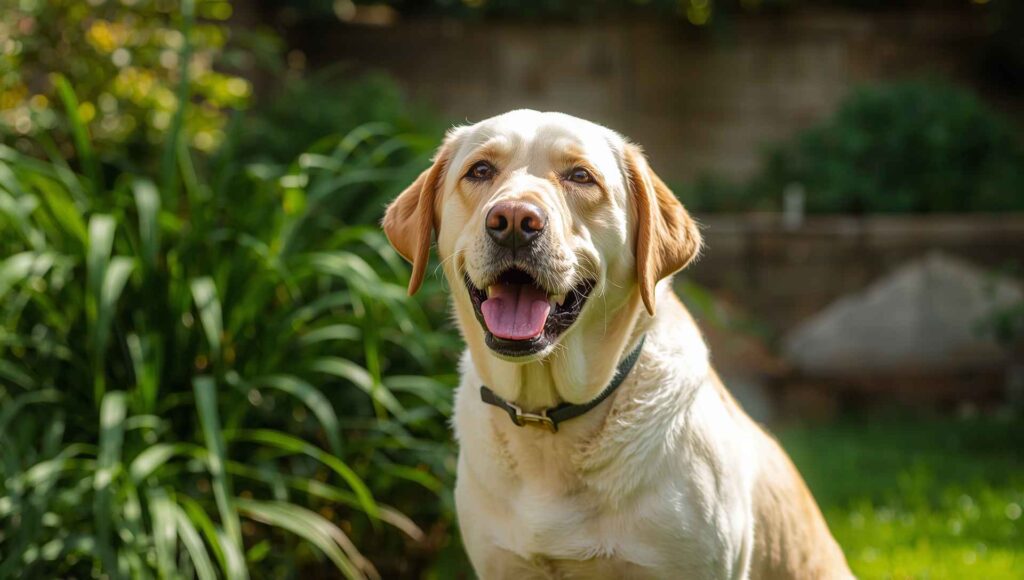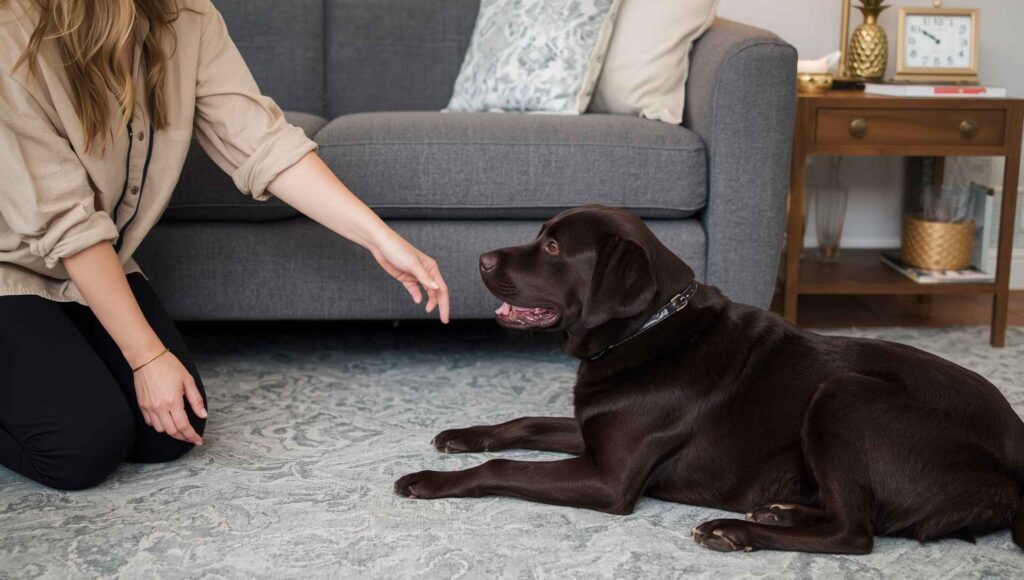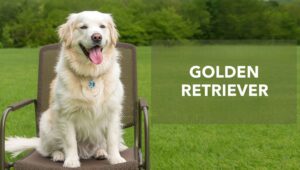Labrador Retriever Guide: Everything About America’s Top Dog

Introduction
The Labrador Retriever stands as America’s most beloved canine companion, consistently ranking as the number one dog breed for over three decades. These remarkable dogs have captured hearts worldwide with their gentle temperament, unwavering loyalty, and exceptional versatility. Originally bred as fishing dogs in Newfoundland, the Labrador Retriever has evolved into the quintessential family pet, excelling in roles ranging from devoted companion to professional service animal.
Understanding what makes the Labrador Retriever so special requires examining their rich history, distinctive characteristics, and the qualities that have made them indispensable members of countless families. Whether you’re considering adding a Labrador Retriever to your household or simply want to learn more about this extraordinary breed, this comprehensive guide will provide valuable insights into every aspect of Labrador ownership.
History and Origins of Labrador Retrievers
The Labrador Retriever’s story begins not in Labrador, but on the rugged coastlines of Newfoundland in the 1500s. These early ancestors, known as St. John’s Water Dogs, worked alongside fishermen to retrieve nets and catch escaping fish. The breed’s exceptional swimming ability and natural retrieving instincts made them invaluable partners in the harsh maritime environment.
English nobles visiting Newfoundland in the early 1800s were impressed by these working dogs and brought several back to England. The Earl of Malmesbury is credited with coining the term “Labrador dog” in the 1830s, referring to these imported canines. Through careful breeding programs, English enthusiasts refined the breed, establishing the foundation for the modern Labrador Retriever.
“The Labrador is a breed that combines the best of both worlds – the gentle nature of a family companion with the robust working ability of a sporting dog,” notes canine historian Dr. Stanley Coren in his research on breed development.
The breed faced near extinction in its homeland due to heavy dog taxes and quarantine laws, but the English breeding programs ensured survival. The Labrador Retriever was officially recognized by the English Kennel Club in 1903 and by the American Kennel Club in 1917, cementing its status as a distinct and valued breed.
Physical Characteristics and Breed Standards
Size and Build Specifications
The Labrador Retriever exhibits a well-balanced, athletic build designed for endurance and versatility. Understanding these physical specifications helps potential owners prepare for their dog’s needs and ensures proper breed identification.
| Characteristic | Male Labrador Retriever | Female Labrador Retriever |
|---|---|---|
| Height | 22.5-24.5 inches | 21.5-23.5 inches |
| Weight | 65-80 pounds | 55-70 pounds |
| Life Expectancy | 10-12 years | 10-12 years |
| Coat Length | Short, dense double coat | Short, dense double coat |
| Exercise Needs | 2+ hours daily | 2+ hours daily |
Distinctive Features and Coat Colors

The Labrador Retriever possesses several distinctive physical features that set them apart from other retrieving breeds. Their broad head features kind, expressive eyes that convey intelligence and friendliness. The breed’s trademark “otter tail” is thick at the base, gradually tapering, and completely covered with dense fur, serving as a powerful rudder during swimming.
The Labrador Retriever comes in three recognized colors: yellow, black, and chocolate. Yellow variants range from pale cream to rich fox red, while black Labs display a solid, lustrous coat. Chocolate Labradors showcase various shades from light cocoa to deep chocolate brown. All color variations share the same wonderful temperament and capabilities that define the breed.
Their water-resistant double coat consists of a soft, insulating undercoat and a harder, weather-resistant outer layer. This coat requires regular maintenance but provides excellent protection in various weather conditions, reflecting the breed’s working heritage.
Temperament and Personality Traits
Natural Disposition and Behavior
The Labrador Retriever is renowned for its exceptional temperament, consistently demonstrating traits that make them ideal family companions. These dogs exhibit remarkable patience, gentleness, and an almost intuitive understanding of human emotions. Their natural eagerness to please makes training enjoyable and effective, while their stable temperament ensures predictable, trustworthy behavior around children and other pets.
Intelligence ranks among the Labrador Retriever’s most notable characteristics. They consistently perform well in obedience training, problem-solving situations, and complex task learning. This mental acuity, combined with their strong work ethic, explains their success in various professional roles including search and rescue, therapy work, and assistance services.
The breed’s social nature means Labrador Retrievers thrive on interaction and can become anxious or destructive when left alone for extended periods. They demonstrate remarkable loyalty to their families while maintaining friendly attitudes toward strangers, making them excellent ambassadors for responsible dog ownership.
Energy Levels and Exercise Requirements
Labrador Retrievers possess high energy levels that require consistent outlets for physical and mental stimulation. These athletic dogs need substantial daily exercise to maintain physical health and emotional well-being. Without adequate activity, a Labrador Retriever may develop behavioral issues including excessive barking, destructive chewing, or hyperactivity.
Swimming represents the ideal exercise for Labrador Retrievers, combining their natural love of water with excellent cardiovascular conditioning. Many Labs will happily retrieve objects from water for hours, providing both physical exercise and mental stimulation. Land-based activities like hiking, running, and fetch games also satisfy their exercise needs while strengthening the human-dog bond.
Training and Intelligence
Learning Capacity and Trainability
The Labrador Retriever ranks among the most trainable dog breeds, consistently demonstrating remarkable learning capacity and retention. Their intelligence, combined with an inherent desire to please, creates ideal conditions for successful training outcomes. These dogs excel at understanding complex commands, learning routines quickly, and adapting to new situations with confidence.
Positive reinforcement techniques work exceptionally well with Labrador Retrievers, as they respond enthusiastically to praise, treats, and play rewards. Their food motivation makes treat-based training particularly effective, though owners must monitor caloric intake to prevent weight gain. Consistency and patience during training sessions yield the best results with this eager-to-learn breed.
Early socialization proves crucial for Labrador Retriever development, exposing them to various people, animals, environments, and experiences. This exposure helps ensure well-rounded adult dogs who handle new situations confidently and appropriately.
Professional Working Roles
The versatility of the Labrador Retriever extends far beyond family companionship, with these dogs excelling in numerous professional capacities. Guide dogs for the visually impaired represent one of their most recognized roles, with Labrador Retrievers demonstrating the temperament, intelligence, and physical capabilities necessary for this demanding work.
Search and rescue operations frequently rely on Labrador Retrievers for their scenting abilities, endurance, and determination. These dogs can work in various conditions, from wilderness areas to disaster sites, using their natural retrieving instincts to locate missing persons. Their calm demeanor under pressure makes them invaluable team members in emergency situations.
Detection work represents another area where Labrador Retrievers excel, with many serving in airport security, customs operations, and law enforcement. Their keen noses and focused work ethic make them excellent candidates for detecting drugs, explosives, or other contraband materials.
Health Considerations and Common Issues

Genetic Health Concerns
While generally healthy, the Labrador Retriever is predisposed to certain genetic conditions that potential owners should understand. Hip and elbow dysplasia represent the most common orthopedic concerns, affecting joint development and potentially causing mobility issues later in life. Responsible breeders conduct health screenings to minimize these risks in breeding programs.
Progressive Retinal Atrophy (PRA) affects vision development in some Labrador Retrievers, potentially leading to blindness. Exercise Induced Collapse (EIC) is another genetic condition where dogs experience weakness or collapse after intense exercise. DNA testing can identify carriers of these conditions, helping breeders make informed decisions.
Obesity represents a significant health concern for Labrador Retrievers due to their food-motivated nature and tendency to overeat. Maintaining proper weight through controlled feeding and regular exercise helps prevent joint stress, diabetes, and other weight-related health issues.
Preventive Healthcare and Maintenance
Regular veterinary care forms the foundation of Labrador Retriever health management. Annual examinations, vaccination updates, and preventive treatments for parasites help maintain optimal health throughout their lives. Early detection of health issues through routine screening allows for more effective treatment options.
Dental care requires particular attention in Labrador Retrievers, as their love of retrieving various objects can lead to tooth damage or wear. Regular brushing, dental chews, and professional cleanings help maintain oral health and prevent periodontal disease.
Grooming and Maintenance Requirements
Coat Care and Shedding Management
The Labrador Retriever’s double coat requires regular maintenance to keep it healthy and manageable. Despite their relatively short hair, these dogs shed considerably, particularly during seasonal coat changes in spring and fall. Daily brushing during shedding seasons helps control loose hair and reduces household cleanup requirements.
Regular grooming sessions provide opportunities to check for skin issues, parasites, or other health concerns while maintaining coat quality. A good quality slicker brush effectively removes loose undercoat, while a deshedding tool can help manage seasonal shedding periods. Weekly brushing typically suffices during non-shedding periods.
Bathing frequency depends on lifestyle and activity levels, with most Labrador Retrievers requiring baths every 6-8 weeks or when noticeably dirty. Their water-resistant coat can make thorough wetting challenging, requiring patience and proper technique to ensure complete cleaning.
Nail, Ear, and Dental Care
Nail trimming represents an essential aspect of Labrador Retriever grooming, as overgrown nails can cause discomfort and affect gait. Active dogs may naturally wear down their nails, but most require regular trimming every 3-4 weeks. Gradual introduction to nail trimming during puppyhood helps ensure acceptance of this necessary procedure.
Ear cleaning requires attention due to the Labrador Retriever’s floppy ears, which can trap moisture and debris. Weekly ear checks and cleaning as needed help prevent infections and maintain ear health. Swimming activities increase the importance of proper ear drying and monitoring.
Nutrition and Feeding Guidelines
Dietary Requirements and Feeding Schedules
Proper nutrition plays a crucial role in maintaining Labrador Retriever health, supporting their active lifestyle while preventing obesity. High-quality commercial dog foods formulated for large, active breeds typically meet their nutritional needs when fed according to manufacturer guidelines. However, individual dogs may require adjustments based on activity level, age, and health status.
Labrador Retrievers benefit from scheduled feeding times rather than free-feeding arrangements. Most adult Labs thrive on two meals per day, helping regulate digestion and prevent bloat. Measuring food portions accurately helps maintain proper weight, as these food-motivated dogs rarely self-regulate their intake.
Puppy nutrition requires special consideration, with growing Labrador Retrievers needing nutrient-dense foods to support healthy development. Large breed puppy formulas help ensure proper growth rates while supporting joint development during crucial growth periods.
Weight Management Strategies
Obesity prevention remains paramount for Labrador Retriever health, as excess weight exacerbates joint problems and increases disease risks. Regular body condition assessments help owners monitor their dog’s weight status and make necessary adjustments to diet or exercise routines.
Treating should comprise no more than 10% of daily caloric intake, with many owners using portions of their dog’s regular kibble as training rewards. Low-calorie alternatives like green beans, carrots, or ice cubes can satisfy a Labrador Retriever’s desire for food rewards without contributing excessive calories.
Labrador Retrievers as Family Pets

Compatibility with Children and Other Pets
The Labrador Retriever’s reputation as an excellent family dog stems from their natural affinity for children and patient, gentle nature. These dogs seem to instinctively understand the need for careful behavior around small children, often serving as protective guardians while engaging in play. Their size and enthusiasm require supervision with very young children to prevent accidental knockdowns during excited greetings.
Socialization with other pets typically proceeds smoothly with Labrador Retrievers, as their friendly nature extends to other animals. Early introduction and proper supervision help ensure positive relationships with cats, other dogs, and various household pets. Their retrieving instincts may manifest as gentle mouthing behavior, which requires training to manage appropriately.
“Labs have this incredible ability to read the energy of a household and adjust their behavior accordingly,” observes professional dog trainer Sarah Wilson. “They’re gentle giants who seem to know exactly how to interact with each family member.”
Housing and Space Requirements
While Labrador Retrievers can adapt to various living situations, they thrive best in homes with adequate space for exercise and play. Their size and energy levels make apartment living challenging unless owners commit to extensive daily exercise routines. Access to a securely fenced yard provides opportunities for free play and investigation, supporting their mental and physical well-being.
Indoor space considerations include providing comfortable resting areas away from household traffic while maintaining inclusion in family activities. Labrador Retrievers prefer being near their families rather than isolated in separate areas, making open floor plans ideal for this social breed.
Choosing a Labrador Retriever
Finding Reputable Breeders
Selecting a responsible breeder represents one of the most important decisions in acquiring a healthy Labrador Retriever. Reputable breeders conduct health testing on breeding stock, provide health clearances, and offer ongoing support throughout the dog’s life. They willingly answer questions about their breeding program, allow visits to meet parent dogs, and provide references from previous buyers.
Warning signs of irresponsible breeding include unwillingness to show breeding facilities, lack of health clearances, availability of multiple litters simultaneously, and pressure to purchase immediately. Puppy mills and backyard breeders often produce dogs with health and temperament issues that become costly and heartbreaking for families.
Quality Golden Retriever Guides and Labrador resources can help educate potential owners about what to expect from responsible breeders and proper puppy selection criteria.
Adoption and Rescue Options
Labrador Retriever rescue organizations provide excellent alternatives to purchasing puppies, offering adult dogs who need second chances at happy homes. These dogs often come with basic training and known temperaments, making integration into families more predictable. Rescue organizations typically conduct thorough evaluations and provide ongoing support throughout the adoption process.
Adult Labrador Retrievers from rescue situations may require patience and understanding as they adjust to new homes and routines. However, their adaptability and resilient nature help most dogs settle successfully into loving families. The reward of providing a home for a dog in need adds special meaning to the human-dog relationship.
Cost Considerations and Long-term Commitment
Initial and Ongoing Expenses
Owning a Labrador Retriever involves significant financial commitment extending well beyond the initial purchase or adoption fee. First-year expenses typically include veterinary care, vaccinations, spaying or neutering, quality food, training supplies, bedding, toys, and other essential equipment. These costs can easily reach $2,000-$3,000 during the first year.
Annual expenses for adult Labrador Retrievers include food, routine veterinary care, grooming supplies, toys, and miscellaneous items. Emergency veterinary care, which may become necessary due to their adventurous nature, can add substantial unexpected costs. Pet insurance or emergency savings funds help manage these potential expenses.
Time and Energy Investment
The commitment to a Labrador Retriever extends far beyond financial considerations, requiring substantial time and energy investment throughout their 10-12 year lifespan. Daily exercise needs, training requirements, grooming, and companionship demands mean owners must dedicate several hours daily to proper care.
Vacation planning becomes more complex with Labrador Retriever ownership, requiring pet care arrangements or pet-friendly accommodations. Their social nature means they don’t handle extended absences well, making reliable care arrangements essential for owners who travel frequently.
Conclusion
The Labrador Retriever continues to earn its position as America’s favorite dog breed through an exceptional combination of intelligence, loyalty, versatility, and gentle temperament. These remarkable dogs offer families years of companionship, adventure, and unconditional love while serving various professional roles that benefit society. Their adaptability allows them to thrive in diverse environments, from active outdoor families to those seeking calm, steady companions.
Success with a Labrador Retriever requires understanding their needs, providing proper care, and committing to their well-being throughout their lives. The investment in time, energy, and resources pays dividends through the deep bond that develops between these special dogs and their families. Their intelligence and eagerness to please make training enjoyable, while their stable temperament provides peace of mind around children and other pets.
While Labrador Retrievers face certain health challenges and require consistent exercise and mental stimulation, their positive qualities far outweigh these considerations for dedicated owners. The joy, laughter, and companionship they bring to households create memories that last long beyond their years.
For those considering adding a Labrador Retriever to their family, thorough research, honest assessment of lifestyle compatibility, and commitment to responsible ownership are essential. These wonderful dogs deserve homes that can meet their physical and emotional needs while appreciating their unique qualities and contributions to family life.
As you consider whether a Labrador Retriever might be the perfect addition to your family, what aspects of their personality and care requirements align best with your lifestyle and expectations?






